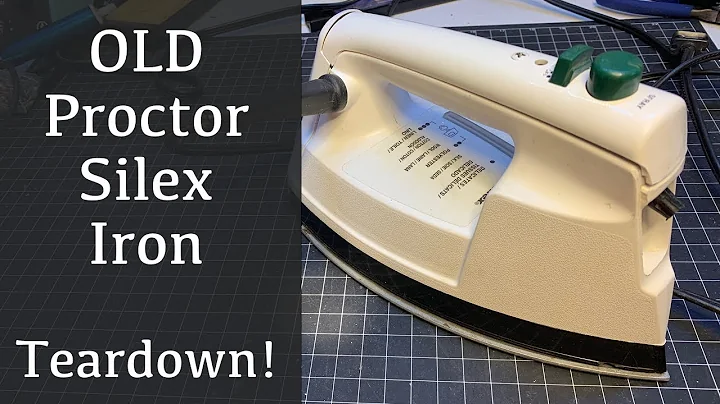Mastering Preheating Techniques for Low Alloy High-Strength Steel Welding
Table of Contents:
- Introduction
- The Importance of Metallurgy in Welding
- Understanding Low Alloy High-Strength Steel
- The Role of Preheat in Welding
- Factors Affecting Preheat Requirements
- Carbon Equivalent and its Significance
- Recommended Preheat Temperatures
- The Effects of Preheating on Cooling Rate and Moisture
- Comparing Preheat Techniques
- Welding Techniques for Low Alloy Steel
- The Use of Undermatched Filler Metal
- Welding Precautions and Techniques
- Part One: Preheating and Tack Welding
- Part Two: Completing the Weld
- Conclusion
The Importance of Preheating in Welding Low Alloy High-Strength Steel
Welding is not just about joining metal pieces together; it also involves understanding the underlying metallurgy of the materials being welded. In the case of low alloy high-strength steel, preheating plays a crucial role in ensuring a successful weld. This article will delve into the significance of preheating, its impact on the cooling rate and moisture levels, and the recommended temperatures for preheat. We will also discuss the concept of carbon equivalent and how it affects the hardenability of the steel. Additionally, we will explore different preheat techniques and the use of undermatched filler metal. By the end of this article, you will have a comprehensive understanding of the importance of preheating when welding low alloy high-strength steel.
Introduction
Metallurgy is a fundamental aspect of welding that every welder must grasp. Without a basic understanding of metallurgy, achieving strong and durable welds can be challenging. One valuable source of knowledge in this field is the book "Metals and How to Weld Them" published by the James F Lincoln Foundation. This book provides a wealth of information on metallurgy, making it an indispensable resource for welders. In this article, we will focus on the topic of preheating in welding low alloy high-strength steel, drawing insights from the field of metallurgy.
The Importance of Metallurgy in Welding
Metallurgy is the study of the physical and chemical behavior of metallic elements and their alloys. In welding, metallurgy plays a crucial role in understanding how different metals and alloys behave when subjected to heat and other external factors. By understanding metallurgy, welders can make informed decisions about the preheating temperatures, welding techniques, and filler metal to be used for specific materials. This knowledge ensures that welds are strong, durable, and resistant to failures such as cracking or brittleness.
Understanding Low Alloy High-Strength Steel
Low alloy high-strength steel is a type of steel that contains small amounts of alloying elements such as chromium, molybdenum, and manganese. These elements enhance the strength and hardness of the steel, making it ideal for applications requiring high tensile strength. However, this type of steel has a characteristic known as hardenability, which means it can become brittle when subjected to heat and rapid cooling. To prevent this brittleness, preheating is crucial before welding.
The Role of Preheat in Welding
Preheating is the practice of heating the base metal before welding. It serves several essential purposes in the welding of low alloy high-strength steel. Firstly, preheating slows down the cooling rate of the metal, allowing it to undergo a controlled cooling process. This controlled cooling minimizes the risk of rapid expansion and contraction, which can lead to cracking or distortion in the welded joint. Secondly, preheating drives off any moisture present on the metal surface. Moisture, in the form of hydrogen, can cause hydrogen-induced cracking in low alloy steels. By removing moisture through preheating, the risk of cracking is significantly reduced.
Factors Affecting Preheat Requirements
The preheat requirements for low alloy high-strength steel depend on various factors. One crucial factor is the carbon equivalent of the steel. Carbon equivalent is a measure of the combined effect of various elements present in the steel, such as carbon, chromium, molybdenum, and manganese. These elements have an impact on the hardenability of the steel and can be considered the equivalent of a higher carbon content. Preheat charts and calculators are available to determine the recommended minimum preheat temperature based on the carbon equivalent of the steel.
Carbon Equivalent and its Significance
The carbon equivalent is a vital parameter to consider when determining the preheat temperature for welding low alloy high-strength steel. It indicates the steel's hardenability and its susceptibility to crack formation during welding. Elements such as chromium, molybdenum, and manganese contribute to the carbon equivalent value. The higher the carbon equivalent, the higher the risk of hardening and cracking if the steel is not adequately preheated. Understanding the carbon equivalent helps welders determine the appropriate preheat temperature to ensure a successful weld.
Recommended Preheat Temperatures
The recommended preheat temperature for low alloy high-strength steel can vary depending on its carbon equivalent and other factors. Generally, a preheat temperature of around 500 degrees Fahrenheit is considered suitable for this type of steel. However, it is essential to consult preheat charts and calculators to determine the exact preheat temperature required for specific materials. The use of infrared guns can also help welders gauge the temperature of the base metal accurately.
The Effects of Preheating on Cooling Rate and Moisture
One of the main effects of preheating is the slowing down of the cooling rate of the base metal. By heating the metal before welding, the cooling process becomes more controlled, reducing the risk of rapid contraction and the formation of cracks. Additionally, preheating helps drive off moisture that may be present on the metal surface. Moisture contains hydrogen, which can cause hydrogen-induced cracking in low alloy steels. By eliminating moisture through preheating, the risk of cracking is minimized.
Comparing Preheat Techniques
There are several preheat techniques available for welding low alloy high-strength steel. The choice of technique depends on factors such as the size and complexity of the welded joint. Common preheat techniques include the use of rosebud torches and the application of induction heating. Each technique has its advantages and considerations, and it is essential for welders to select the appropriate method based on the specific requirements of the welding project.
Welding Techniques for Low Alloy Steel
When welding low alloy high-strength steel, specific welding techniques should be employed to ensure optimal results. One important consideration is maintaining a slow travel speed to avoid rapid heating and cooling cycles that can lead to cracking. Additionally, tapering off the amperage gradually and keeping an eye on the weld pool's behavior are crucial to prevent defects. Weld sequencing, such as welding one side first and then the other, can also help control heat input and ensure the desired preheat temperature is maintained.
The Use of Undermatched Filler Metal
In some cases, the use of undermatched filler metal can be advantageous when welding low alloy high-strength steel. Undermatched filler metal refers to the use of a filler metal with lower strength properties than the base metal. The strength of the welded joint is primarily determined by the design of the part, rather than the weld metal. Therefore, undermatched filler metal can be used without compromising the integrity of the weld. Consultation with welding professionals and adherence to the welding code requirements are crucial when considering undermatched filler metal.
Welding Precautions and Techniques
When welding low alloy high-strength steel, specific precautions and techniques should be followed to ensure quality welds. These include using a water-cooled TIG torch for high-amperage applications to prevent overheating, propping the torch on preheated metal using tools such as TIG fingers, and maintaining a slow and steady welding speed. It is important to avoid rapid heating and cooling cycles, as well as ensuring proper tapering off of the amperage to prevent defects. Following these techniques and precautions will help produce strong and durable welds.
Part One: Preheating and Tack Welding
In the first part of this series, we focused on the importance of preheating in welding low alloy high-strength steel. We discussed the role of preheating in controlling the cooling rate and driving off moisture. We also explored the concept of carbon equivalent and its significance in determining the appropriate preheat temperature. Additionally, we covered various preheat techniques and the benefits of using undermatched filler metal. In the next part, we will continue with the welding process, including applying tack welds and completing the full weld. Stay tuned for the second part of this series, where we will delve into more welding techniques and considerations.
Part Two: Completing the Weld
In the second part of this series, we will discuss the process of completing the weld on low alloy high-strength steel. We will start by applying tack welds to ensure proper alignment and stability. Then, we will proceed with the second pass, which is required to achieve the minimum weld leg size specified in the drawing. We will emphasize the importance of controlling the heat and ensuring a slow travel speed to prevent defects. By the end of this part, you will have a comprehensive understanding of the welding process for low alloy high-strength steel and the precautions necessary to create high-quality welds.
Conclusion
In conclusion, preheating plays a vital role in welding low alloy high-strength steel. By understanding the principles of metallurgy and the significance of preheat, welders can ensure the success and integrity of their welds. Factors such as carbon equivalent, preheat temperatures, and welding techniques all contribute to achieving strong and durable welds. Remember to follow the recommended preheat guidelines, use appropriate filler metals, and employ suitable welding techniques to achieve optimal results. By incorporating these practices, you can tackle the challenges of welding low alloy high-strength steel with confidence.
Highlights:
- Understanding the metallurgical principles in welding low alloy high-strength steel.
- The importance of preheating and its impact on cooling rate and moisture levels.
- The significance of the carbon equivalent in determining preheat requirements.
- Recommended preheat temperatures for low alloy high-strength steel.
- Different preheat techniques and undermatched filler metal usage.
- Welding precautions and techniques for successful welds.
FAQ:
Q: What is low alloy high-strength steel?
A: Low alloy high-strength steel is a type of steel that contains small amounts of alloying elements such as chromium, molybdenum, and manganese. These elements enhance the strength and hardness of the steel, making it suitable for applications requiring high tensile strength.
Q: Why is preheating important when welding low alloy high-strength steel?
A: Preheating is crucial when welding low alloy high-strength steel because it helps slow down the cooling rate of the metal and reduces the risk of cracking or brittleness. It also drives off moisture, which can lead to hydrogen-induced cracking.
Q: How can I determine the appropriate preheat temperature for low alloy high-strength steel?
A: The recommended preheat temperature for low alloy high-strength steel depends on factors such as the carbon equivalent of the steel. Consulting preheat charts and calculators and using infrared guns can help accurately determine the preheat temperature required for specific materials.
Q: Can I use undermatched filler metal when welding low alloy high-strength steel?
A: In certain cases, the use of undermatched filler metal can be advantageous when welding low alloy high-strength steel. However, it is important to consult welding professionals and adhere to the welding code requirements when considering undermatched filler metal.
Q: What are some precautions to take when welding low alloy high-strength steel?
A: When welding low alloy high-strength steel, it is important to maintain a slow travel speed, avoid rapid heating and cooling cycles, and taper off the amperage gradually. Using water-cooled torches, such as a TIG torch, and propping the torch on preheated metal can also help prevent overheating.







